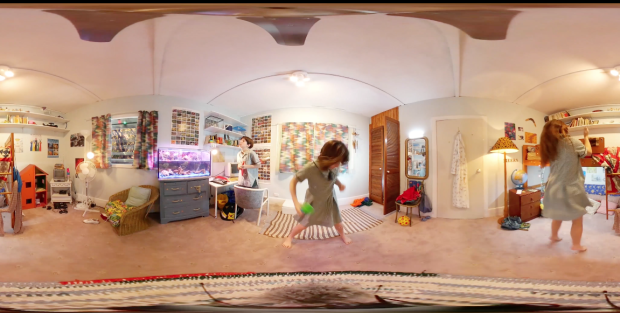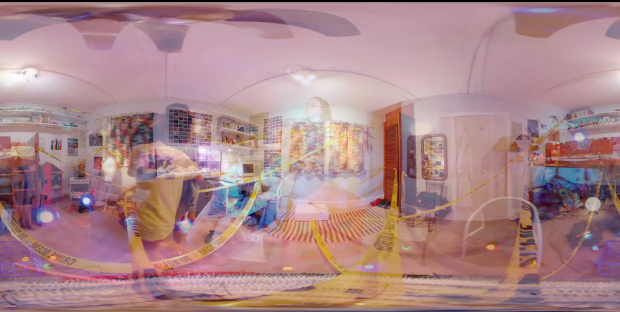Virtual reality: When theatre sets become film sets
The designer of Curious Directive’s new show explains how different it is to create a virtual reality piece

Frogman centres around Meera, an eleven year-old Australian coral enthusiast. It is the summer holidays and three friends are having a sleepover as they await their first day at high school. The high school bully goes missing – presumed dead and as audience members we get to see the story of her disappearance as though we were in the room with them. The space had to feel playful, enclosed, secretive. As though the room itself was coming of age.
This world would only ever be witnessed through a VR headset, which meant that there had to be an unusual amount of detail – more like a film shoot. The scenes were to be intertwined with beautiful footage of the coral reef. It was pretty cool to use my own photos from childhood as a reference for the design – garish patterns, sticker embellished furniture, chunky games consoles and plenty of nostalgic music and kids movies from my youth.
Initially we didn’t start off with a script. Just an idea of pace, the narrative of select scenes and a handful of conversation starters we could introduce to four, eleven to fifteen year-old Australian school kids. Jack Lowe (director), Pete Malkin (sound designer) and I alongside our awesome liaison Chris auditioned them over three days. All four had completely unique personalities that really shaped the way we built Meera’s bedroom.

The room was custom built in an old boules club in Brisbane. It meant we had control of external lighting for night scenes, we could rotate the whole room 360 degrees and create playful ways of entering the space through cupboards and windows. Our actress playing Meera was the youngest of the group and it felt right that she would still have a child’s bunk bed which meant we could create a den underneath.
The nature of the VR filming meant the 360 degree camera had to sit centrally in the room. So we approached the design very cinematically and built around the camera creating playful action areas and different levels that would encourage the audience to swivel and look around the room. Different locations were all created in the bedroom; dolls houses to create church steeples and the bunk bed as the end of jetty.

Conceptual gestures had to be subtle ones, within the naturalistic architecture of the room. The colours of the walls were a soft blue and we found a lilac carpet with a floral pattern which we planned to animate into a sea bed. We also had a large functioning salt water fish tank for growing live rock and corals – objects would start appearing in the tank as the scenes revealed more about the suspected drowning of our antagonist. Eventually trashing everything at the end of Meera’s journey and entry into adolescence.
Making a set in Australia meant we had none of our usual prop or costume haunts to dress the space. A lot of my early work in Brisbane was scouring the city in charity shops and antique centres to find '90s memorabilia and technology. I think I went into cash converters every day for a week – they knew my name by the end of the trip! Gumtree is also huge over there so we spent evenings in the van turning up to Queensland residents and buying their old furniture.
It was a hugely challenging but incredible show to work on. Those young actors reminded us so much about what it is to be young, in a culture not dissimilar to ours – to keep secrets and to form friendships and in turn we responded to them. Jack went on to create something utterly unique and I’ll never forget my time there.
Frogman runs at Codebase as part of the Edinburgh Fringe until 27 August and then tours the UK until 11 November.














